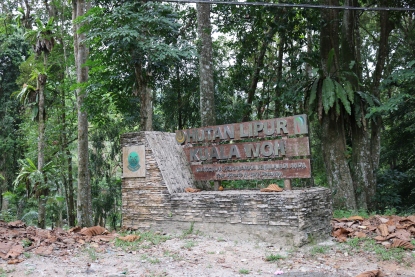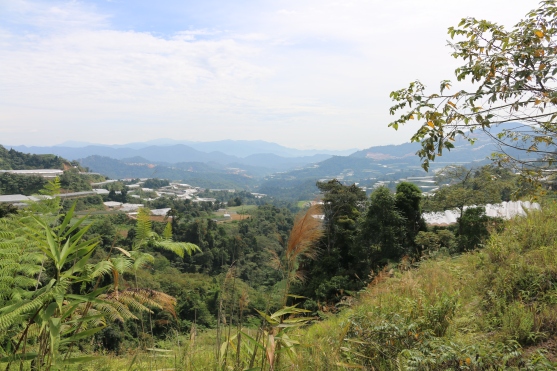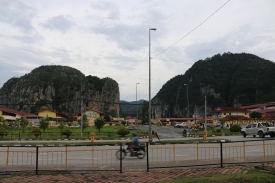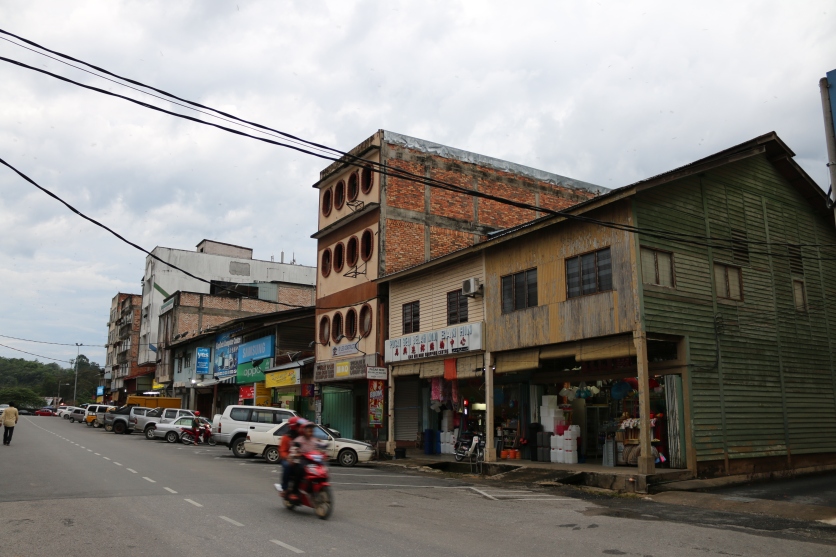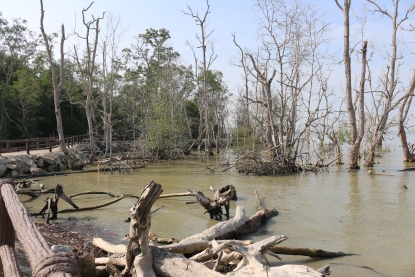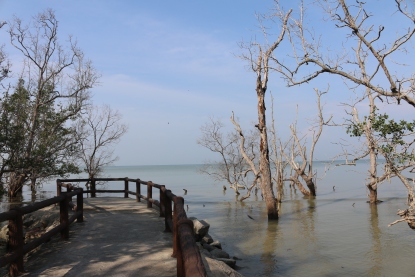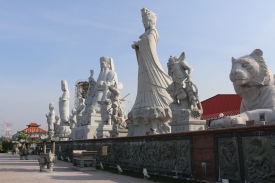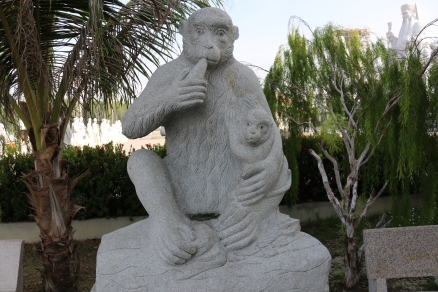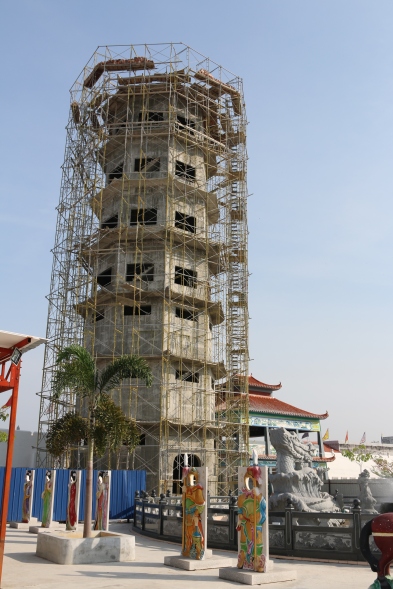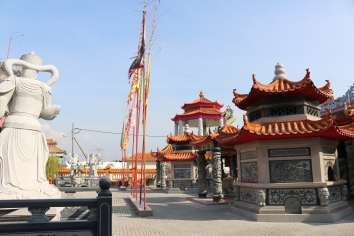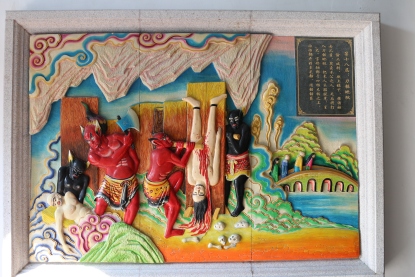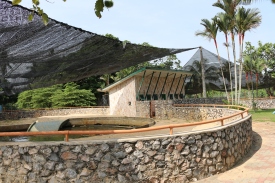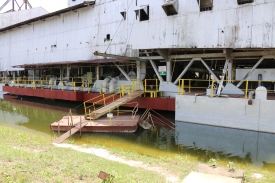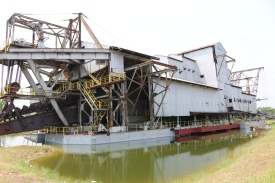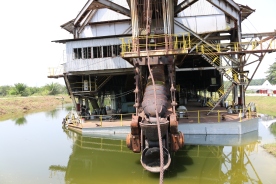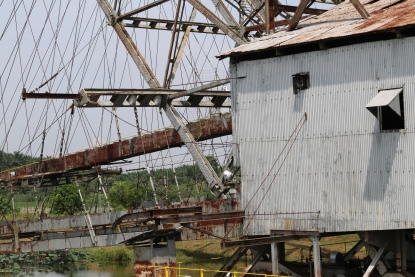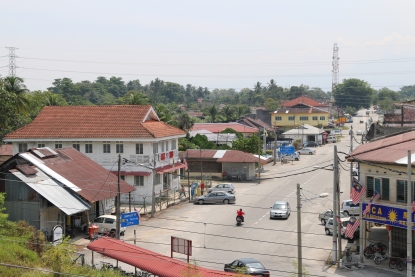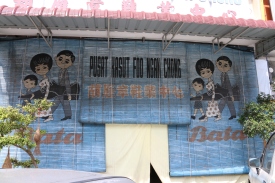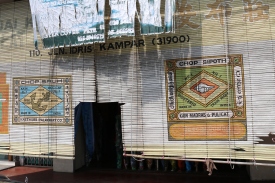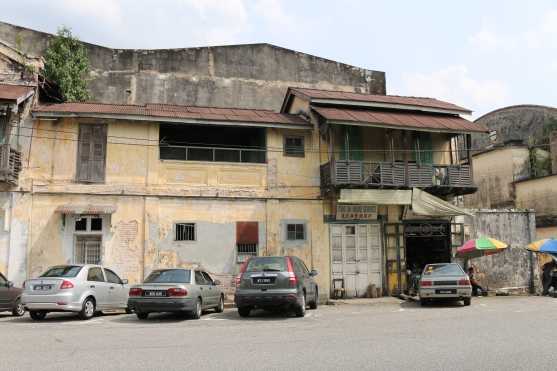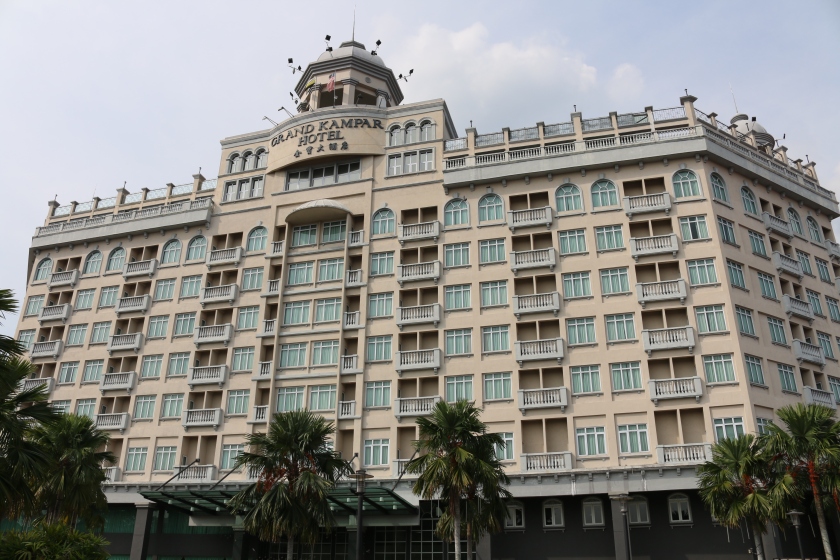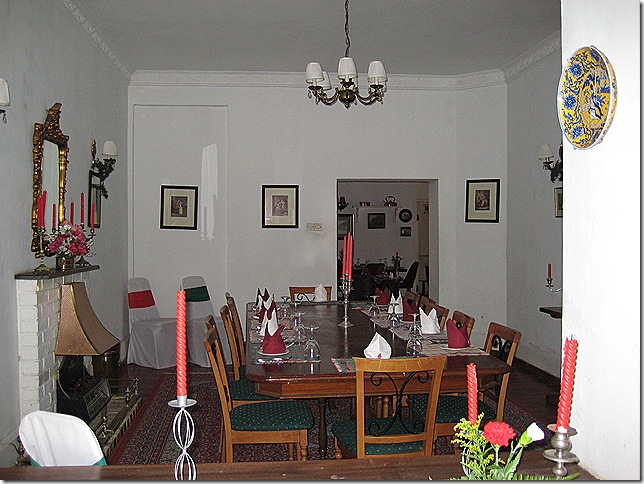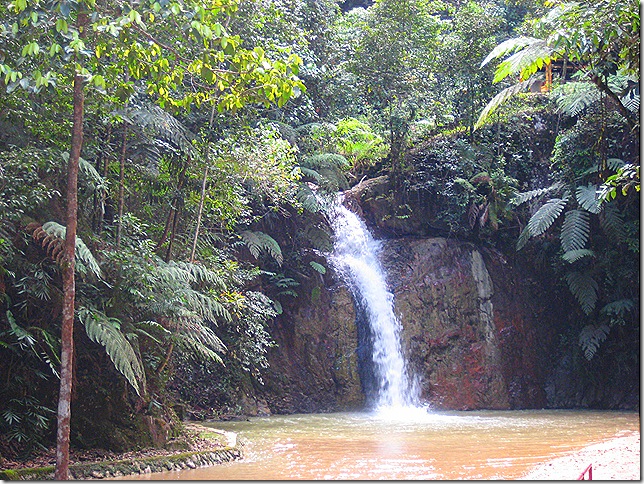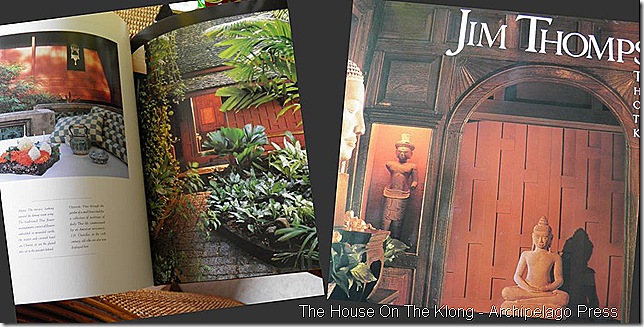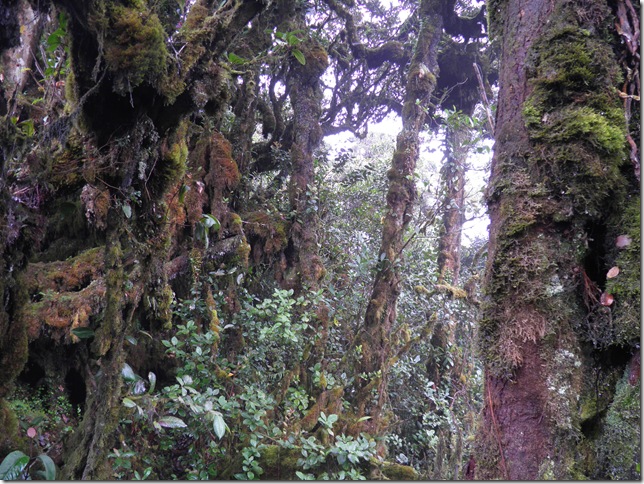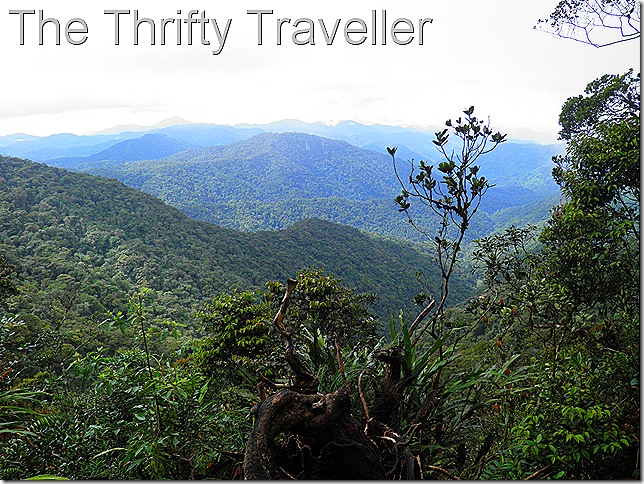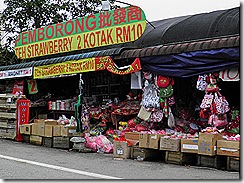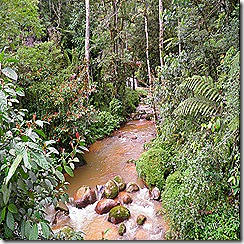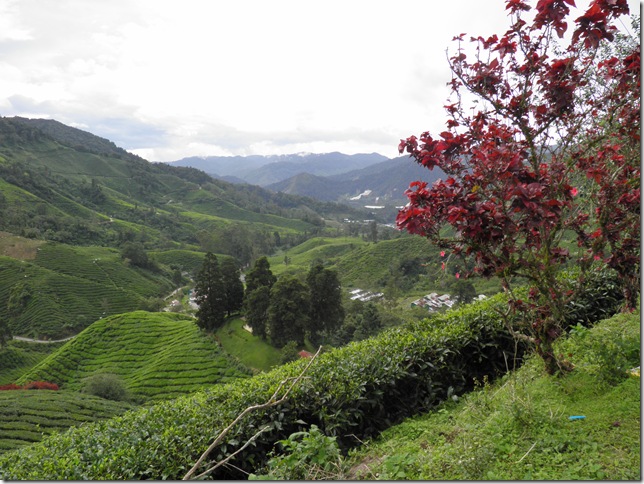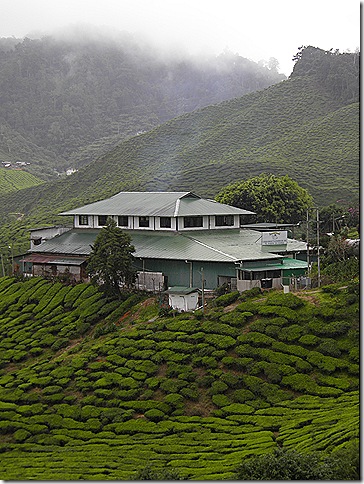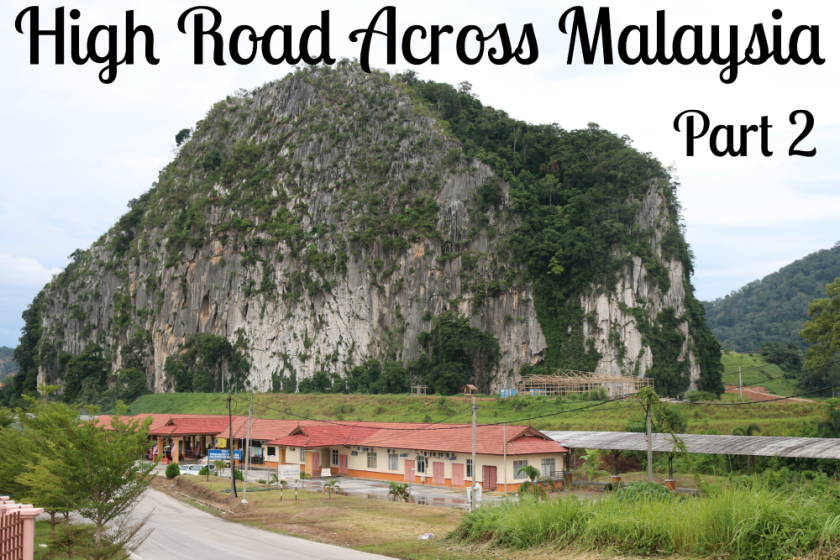
In this post I continue my coast to coast journey across Malaysia via Cameron Highlands, Gua Musang & Lake Kenyir. See Part 1 for the map.
After a 6am breakfast at Kampar I set out for the Cameron Highlands via the old Tapah road (Route 59).
First stop was a quick look around the Kuala Woh Recreational Forest. It is tucked away in a hidden valley at the foot of the Titiwangsa mountain range. The early morning air was refreshingly cool but the camping, chalet and toilet facilities looked rather run down and there were too many mosquitos around. The river looked clean enough and the whole place smelt of tasty durians since August is the peak season for this pungent fruit.

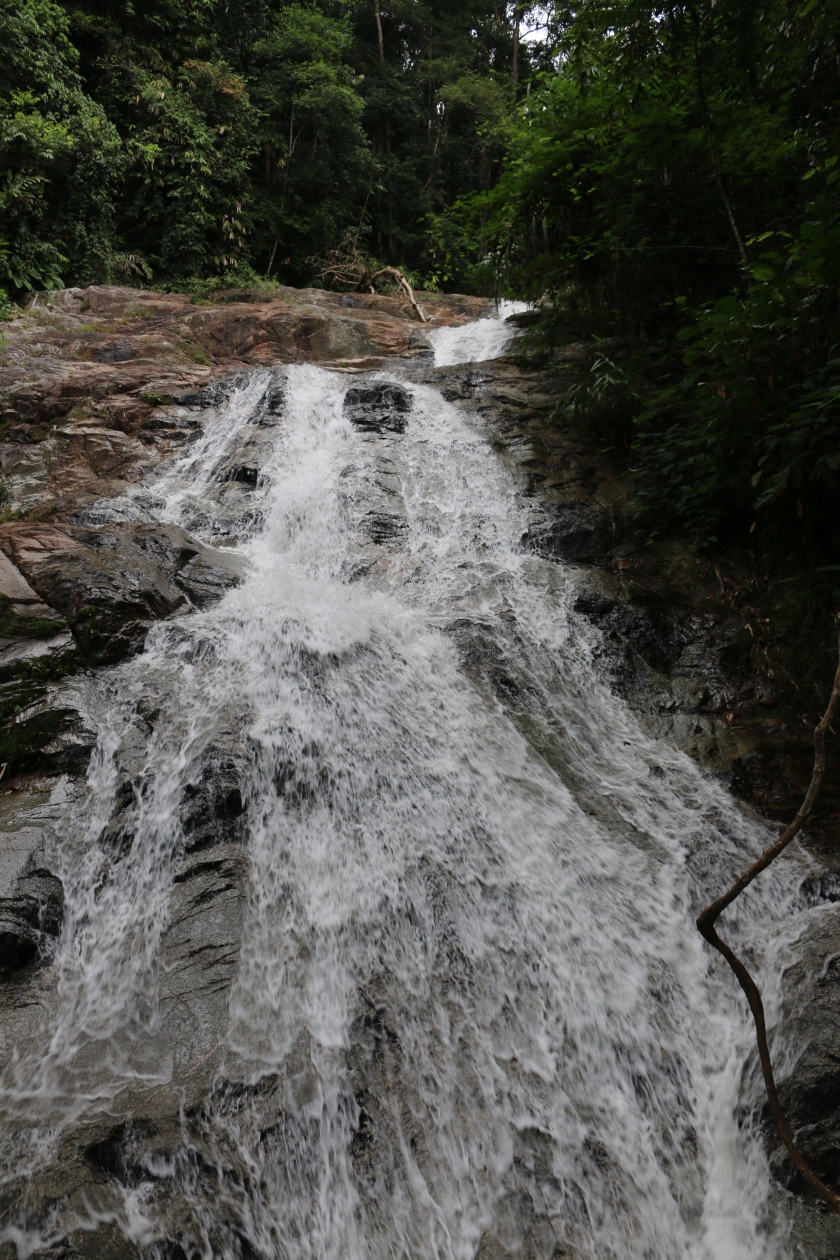
Next stop was Lata Iskandar, one of Malaysia’s most accessible waterfalls being located right next the busy road. This place can get busy at weekends and holidays but since it was still early I had it to myself. I climbed the steps to get a good view of the upper cascade. Everywhere was clean with no litter so somebody had been doing a good job.

From here up until the Cameron Highlands there were numerous roadside stalls selling handicraft items, fresh fruit and vegetables. Most of the vendors appeared to be from the Orang Asli community.

Where Perak borders Pahang the Cameron Highlands begins with the town of Ringlet, probably the least developed of the three Cameron Highlands settlements (Ringlet, Tanah Rata and Brinchang) at an altitude of around 1100 metres above sea level. My car thermometer displayed a very comfortable reading of 20°C, which is about the average daytime temperature for this high altitude district, cooling to a chilly 14°C at night.

It has been a few years since I’ve been to the Cameron Highlands. The towns themselves have not changed much. For some years they have been rather ugly, sprawling places with too much traffic. Anyone expecting a quaint colonial hill station would be disappointed although there are still some nice parts such as The Lakehouse Hotel and the manicured tea estates. What has changed in recent years however is the explosion of land clearance for agricultural purposes, some of it illegal, which has resulted in vast swathes of the Highlands being covered in polytunnels (see this close up satellite view as an example).

While it is generally a good thing that Malaysia should grow more of its own flowers, vegetables and fruit, the forest clearing and hillside levelling has been done in an uncontrolled way resulting in serious flooding and landslide problems in recent years.
While in Brinchang I took the opportunity to visit the Time Tunnel, an interesting museum crammed with photographs, memorabilia collections and artefacts from days gone by.

At Blue Valley I turned onto the Gua Musang road (185) and soon found myself in Kelantan state. ‘Polytunnel-land’ continued for several more kilometres before finally turning into a more natural landscape as the road began its slow descent from the uplands. It was a good road, partly dual carriageway and elsewhere with frequent overtaking lanes, not that they were needed as there was hardly any traffic. A great road for trying out your new motorbike.
The town of Gua Musang is the administrative hub for the district of the same name which covers a large chunk of southern Kelantan. Until the Central Spine Road (Federal Route 8) was built, Gua Musang was a very isolated place and could only be reached via the Jungle Railway.
During the Emergency, its isolation made it a target for the Communist bandits who attacked the township with a 300 strong force and seized control on 17th July 1948, killing one policeman and capturing another 15. Their aim was to establish a liberated zone from which to extend their grip on the country. A relief force of army and police, supported by the RAF, successfully recaptured the town five days later.

Gua Musang means Cave of the Civet Cats (or foxes). The limestone hills here are honeycombed with holes and the main cave behind the old railway station was believed to be home to a pack of mysterious civet cats, spawning various ghostly legends such as that portrayed in the 1960s comedy thriller film Pontianak Gua Musang.
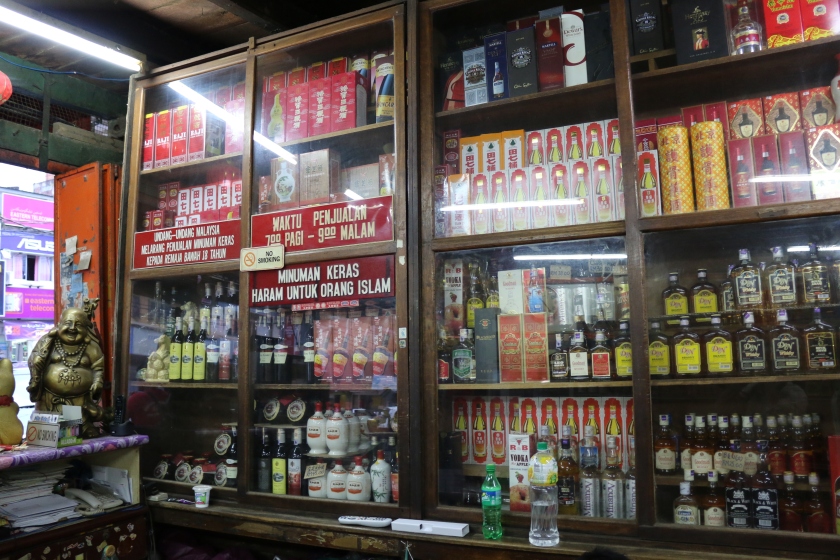
I stayed overnight in Gua Musang at MyHome Hotel which was perfectly adequate apart from having no window. You can’t expect too much for RM 70 per night. On my receipt I noticed they had written my address as British Indian Ocean Territory. That should confuse Tourism Malaysia’s visitor statistics if they monitor such things.
I’ll continue Part 3 of my High Road Across Malaysia journey in the next blog post.

